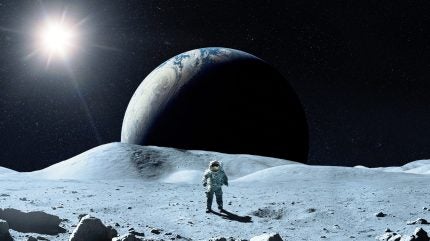
India has shown interest in joining Russia’s ambitious lunar nuclear power plant project. This is part of a broader initiative to establish a lunar base in collaboration with China, as reported by EurAsian Times, citing Russia’s state-owned news agency Tass.
The project, spearheaded by Rosatom, aims to develop a small nuclear power plant with the capacity to generate up to half a megawatt of energy. This power is essential for the planned lunar base’s operations.

Discover B2B Marketing That Performs
Combine business intelligence and editorial excellence to reach engaged professionals across 36 leading media platforms.
Rosatom chief Alexey Likhachev has revealed that both China and India are keen to participate in the innovative lunar energy project. “The new solution that we are asked to implement is the option of a lunar nuclear power plant with an energy capacity of up to half a megawatt,” Likhachev stated at the Eastern Economic Forum.
He emphasised the international interest in the venture, particularly from “our Chinese and Indian partners.”
Roscosmos announced in May 2024 that the development of the nuclear power plant was in progress, with a target of an operational plant on the Moon by around 2036.
The construction of the lunar nuclear power plant poses significant challenges, with Russia indicating that it would likely be completed autonomously, without direct human involvement. The technological solutions for the project are nearing completion, marking a significant advancement in lunar exploration and energy production.

US Tariffs are shifting - will you react or anticipate?
Don’t let policy changes catch you off guard. Stay proactive with real-time data and expert analysis.
By GlobalDataRussia and China have been closely collaborating in space exploration, having announced plans in 2021 for the International Lunar Research Station (ILRS), which is expected to be operational from 2035 to 2045. The ILRS is designed to be a scientific research hub and is “open to all interested countries and international partners.” However, geopolitical tensions, particularly with the US, may limit collaboration with certain nations.
India has set a goal to establish its lunar base by 2050, a timeline that follows the ILRS plans of Russia and China. India’s involvement in the lunar nuclear project with Russia could provide a collaborative opportunity that may help achieve its lunar ambitions sooner.
The US is also considering the use of nuclear power for future lunar bases, with NASA exploring nuclear reactors to support long-term lunar settlements. Establishing a Moon colony requires infrastructure for essential activities, and nuclear power stands as the most feasible energy source for such endeavours.



